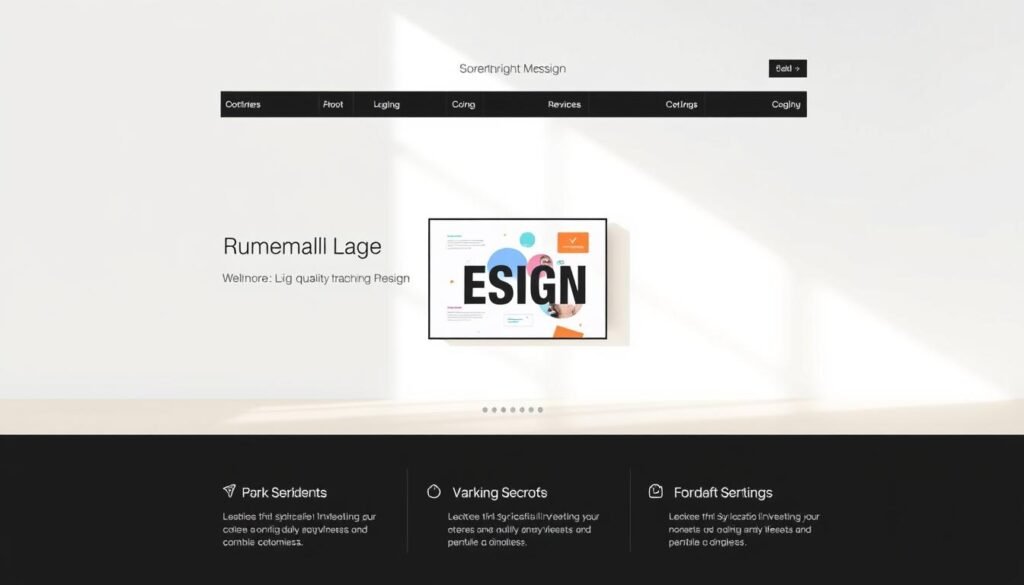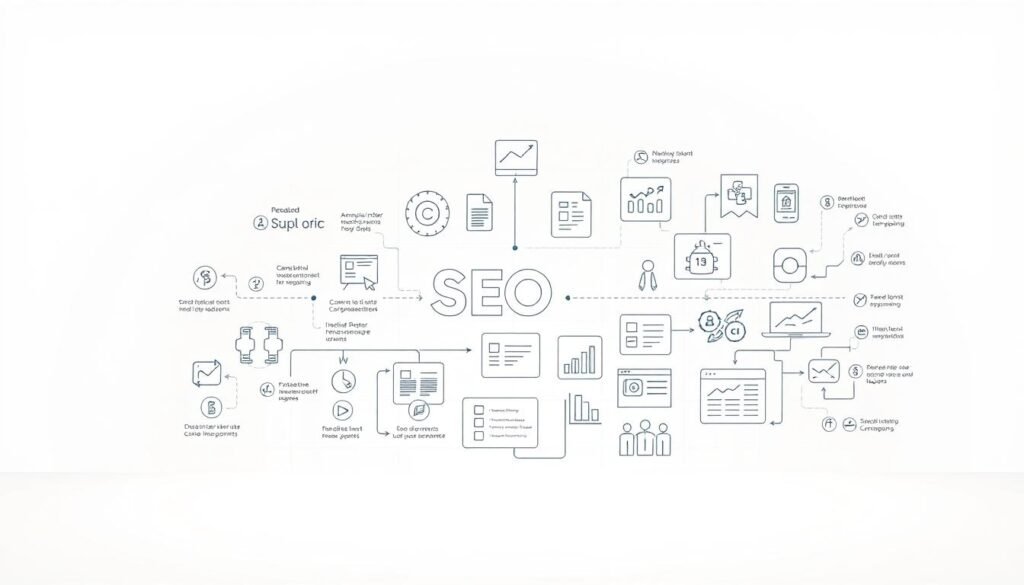I launched my practice by focusing on revenue, not just creative work. I began with a clear plan that set a niche, pricing, and systems for proposals, invoices, and payments so I could convert interest into clients quickly.
I found early momentum slow, then faster as my portfolio and testimonials grew. I used professional tools for proposals and invoicing and registered for an EIN via the IRS online portal to keep finances clean and compliant.
I treated the creative side like a company from day one. That meant a simple website with an About page, portfolio, rates, and contact form, plus repeatable outreach across channels to keep leads flowing.
What follows is my practical roadmap: niche and value, legal setup, finances, site and branding, pricing and contracts, marketing, delivery, and ways to scale. My aim is to give a repeatable way that removes friction and helps me focus on quality work while growing revenue.
Table of Contents
ToggleKey Takeaways
- Build a clear plan and niche to guide early choices.
- Use tools for proposals, invoices, and payments from day one.
- Create a simple website with portfolio, rates, and contact info.
- Register for an EIN and separate finances to avoid later issues.
- Be patient early; accelerate growth with testimonials and steady prospecting.
My Starting Point and Why Now Is the Right Time to Launch
I measured my readiness by listing the skills, software fluency, and portfolio pieces I already had. That gave me a clear baseline and showed which gaps needed closing before outreach.
I watched market signals: steady demand across print, digital, packaging, motion, and website graphics. Those trends told me the present time favors specialists who can deliver focused value.
I benchmarked peers to learn realistic rates and scope expectations. I also listed industries where I had past experience, which shortens sales cycles and improves outcomes.
- Launch threshold: 4–6 relevant pieces, basic website, outreach list.
- Weekly marketing block for predictable pipeline.
- Near-term success: five paid projects with testimonials.
| Service Area | Demand | Skill Level Needed | Typical Price Range (USD) |
|---|---|---|---|
| Branding | High | Advanced | $1,500–$6,000 |
| Packaging | Medium-High | Advanced | $800–$4,000 |
| Motion & Web Graphics | Growing | Intermediate | $400–$3,000 |
I treat this as iterative and data-driven. I set a launch timeline and a review cadence so I can track progress and make sure momentum builds toward long-term success for my new small business.
How to Start a Graphic Design Business: The Practical Roadmap I Followed
I mapped a practical checklist that kept registration, banking, and marketing from becoming chores. This plan let me move from idea to paid projects without getting bogged down.
The foundational steps I tackled first
I chose and checked my business name, registered it where required, and applied for an EIN online with the IRS. I opened a business bank account and set basic bookkeeping so every invoice and expense flowed into one place.
I launched a simple website with an About page, services, a portfolio, and a contact form. I added a Google Business Profile to support local search and make it easier for clients to find me.
What I prioritized in the first 90 days
I published 3–5 strong portfolio pieces in case-study format, built a proposal template, and defined a clear communication cadence for leads and active clients. I activated my network and posted on LinkedIn and Instagram, and I tested starter projects on Upwork and Fiverr for testimonials.
Milestones I used to track progress and success
My milestones kept goals concrete: first five paid projects closed, first testimonial published, first referral, and first retainer signed. I set weekly activity targets—outreach messages, proposals delivered, and follow-ups—to keep momentum on time.
“Small, repeatable steps beat perfect plans every time.”
After each project I documented what worked, where scope expanded, and how to tighten estimates next time. That process let me refine pricing, proposals, and delivery while I grew clients and revenue.
Clarifying My Value Proposition and Niche in the Design Industry
I crafted a short promise focused on measurable results so prospects immediately knew the benefit. That one-sentence value statement frames every proposal, case study, and outreach message I send.
Problems I solve and measurable outcomes
I address brand identity confusion, inconsistent visuals, and low-converting landing pages.
Each problem links to a clear metric: faster launch timelines, improved conversion rates, and consistent brand presentation that reduces support questions.
Target customers and industry focus
I focus on small to mid-size SaaS firms and professional services that need cohesive brand systems.
This target lets me speak their language and shorten discovery, which speeds projects and improves ROI for clients.
Positioning against competitors
I mapped three direct competitors and found gaps in process clarity and measurable proof points.
My edge: case studies that show before/after metrics, a repeatable delivery plan, and niche expertise in branding and website graphics.
- One-sentence value proposition that highlights outcomes.
- Portfolio aligned with niche and client results.
- Quarterly reviews of positioning and marketing plan.
“Clear value beats broad promises when clients must choose fast.”
Choosing a Business Structure and Meeting U.S. Legal Requirements
Picking an entity changed how I invoiced, insured, and reported income from day one. I weighed liability, paperwork, and long-term goals before I committed.
Comparing common structures
I found a sole proprietorship is the fastest option, but it doesn’t separate my personal assets from business risk. An LLC gives limited liability and pass-through tax treatment, which fit my early growth plans.
Partnerships share decision-making and profits but can expose partners to unlimited liability. A corporation creates a separate legal company, though it brings more compliance and formalities.
Registration, EIN, and naming
I registered at the state level, filed a DBA when my trading name differed from my legal one, and applied for an EIN through the IRS online system. I also opened a business account for clear bookkeeping.
Licenses, insurance, and home rules
My local zoning and HOA rules required a home occupation permit. I purchased professional liability and cyber insurance to protect against client disputes and data loss.
- My decision factors: risk tolerance, growth plan, and compliance capacity.
- Compliance step: document renewal dates, registered agent info, and filings.
- Practical step: make sure contracts and website show the correct legal name and ID numbers.
| Structure | Liability | Tax | Best for |
|---|---|---|---|
| Sole proprietorship | Personal liability | Pass-through | Very small, low-risk operations |
| LLC | Limited liability | Pass-through or corporate | Freelancers planning growth |
| Corporation | Strong separation | Corporate tax rules | Scaling teams, investors |
| Partnership | Shared liability | Pass-through | Multiple founders sharing control |
“Treat the legal setup as protection for your work and your clients.”
Organizing My Finances: Business Bank Account, Credit, and Taxes
From day one I set up banking and card tools so my finances never mixed with household bills. That step protected my liability and helped me track cash flow clearly as the studio took on clients.
Separating finances with a business bank account and credit card
I opened a dedicated business bank account and a business credit card the moment income or expenses began. LLCs and corporations must keep funds separate; doing this early builds vendor credit and makes accounting cleaner.
Setting up clean bookkeeping for tax time and cash-flow clarity
I created a simple chart of accounts and picked bookkeeping software that fits my workflow. Invoicing tools that accept cards, send automated reminders, and support recurring billing made retainers simple.
- I track invoice numbers in sequence and reconcile the bank monthly.
- I set aside an estimated percentage of each payment for quarterly tax needs.
- I use the business card for subscriptions and steady costs so expenses are easy to review.
- I document payment terms—deposits, milestones, due dates, and late fees—in every proposal.
I review cash flow weekly—open invoices, upcoming expenses, and runway—so I can adjust pricing, outreach, or scheduling fast. I also consult a CPA for tax questions and to align deductions with my studio setup. These steps keep money simple and let me focus on client work and growth.
Naming, Branding, and Building a Portfolio-Ready Website
I focused on a short, searchable name and checked domains, trademarks, and social accounts before I committed.
Picking a memorable name and logo. I brainstormed easy-to-spell options and tested them with peers. I confirmed uniqueness and registered the legal name. Then I designed a simple logo and a small color and type system that scales across web, proposals, and invoices.
Launching a simple site that converts
I launched a clean website with About, services, portfolio, and contact pages. I added rates or starting ranges so prospects set realistic expectations.
- I lead with niche-relevant work in my portfolio and include concise case studies that show goals, process, and outcomes.
- I optimize for mobile, fast load times, clear CTAs, and a contact form that routes to my inbox and CRM.
- I publish a short “Start Here” FAQ to reduce friction for new clients.
I also set up social media and a Google Business Profile with accurate NAP so local discovery and reviews help build trust. Finally, I match proposal and invoice templates to the site for a consistent brand touch across every client interaction.
Pricing Strategy and Contracts That Protect My Graphic Design Work
My pricing choices became the tool I used to protect time and deliver consistent quality. Clear fees and firm contract terms stopped scope creep before it started and made project planning simple for me and my client.
I pick one primary model per offer: hourly for open-ended tasks, project-based for defined scopes, value-based when the outcome drives strong ROI, and retainers for ongoing support.
Scoping, revisions, and boundaries
I scope deliverables precisely and limit revision rounds (typically two). I list out-of-scope items and set change-order fees so expectations stay realistic.
I include a production timeline, client review deadlines, and availability windows. When scope changes, I pause work, issue a written amendment, and resume only after signatures and updated terms.
Contracts, payments, and IP
Every contract spells out scope, timelines, payment terms, and intellectual property rights. I require deposits (often 50%), use milestone billing, and hold final files until full payment clears.
- I calculate rates backward from revenue goals and capacity, adding taxes and overhead so pricing supports profit.
- I include kill fees, rush fees, and rescheduling rules to protect my calendar and cash flow.
- I define license versus transfer of ownership so usage matches the fee paid.
“Communicating the process early removes surprises and speeds agreement.”
I standardize a contract template reviewed by a lawyer so terms are enforceable. Clear pricing and solid contracts let me focus on quality work and repeatable client service.
Finding Clients: How I Marketed My Graphic Design Business
I treated the first months as a lab for tactics that bring clients without burning my schedule. I kept most work part-time so I could test outreach, offers, and proposals while income stayed steady.
Starting as a side hustle
I used side projects to build experience and gather testimonials. Small paid pieces gave me case studies I could show quickly.
That cushion let me refine pricing and the selling process before relying on this full time.
Outreach channels that worked
- I messaged past colleagues and local businesses with a short offer and portfolio links.
- I posted on LinkedIn and Instagram, sharing before/after outcomes and short process notes.
- I used Upwork and Fiverr for quick wins, filtering briefs for fit and speed.
- I attended meetups and kept my Google Business Profile current for local searches and reviews.
Proposals and client cadence
Proposals led with outcomes: scope, timeline, and price up front, plus one relevant case study. That clarity shortened decisions and reduced back-and-forth.
I kept a strict communication rhythm: weekly status notes during projects and check-ins after delivery. That steady contact raised retention and referrals.
| Channel | Purpose | Typical Outcome |
|---|---|---|
| Network outreach | Fast trust, referrals | Meetings and early clients |
| Social media | Brand proof, inbound leads | Inquiries and portfolio views |
| Marketplaces | Validation, testimonials | Paid test projects |
| Local events & GBP | Local discoverability | Small business clients |
“Respectful follow-up often turned interest into a signed project.”
I tracked outreach, proposals, wins, and losses in a simple CRM. That data let me refine targeting and offers, like an audit-plus-roadmap package that converts faster and leads to larger work.
Delivering Work, Invoicing Professionally, and Getting Paid on Time
I treat delivery as a predictable sequence, not a last-minute sprint. I map each project into discovery, milestones, review points, and final handoff so quality and time stay consistent.
My delivery process for on-time, high-quality projects
I set internal deadlines ahead of client dates so feedback and quality checks fit naturally. I pause for signoff at each milestone and record the agreed scope and any change orders.
Professional invoices and clear payment terms
I send invoices tied to milestones with clear net terms, late fees, entity name, and an invoice number. I release final files only after final payment clears per contract.
Payment collection tools, automated reminders, and recurring billing
I use modern tools that accept ACH and cards, automate reminders, and handle recurring invoices for retainers. I trigger reminders before and after due dates and follow up personally for high-value accounts.
- I reconcile payments weekly and apply them to the correct account.
- I request a short testimonial after delivery and include an easy link for replies.
- I run a brief post-project review to capture lessons and spot follow-on work.
“Predictable delivery and clear invoices protect creative time and cash flow.”
Funding, Tools, and Staying Relevant for Long-Term Success
I matched financing choices to each stage of work rather than guessing what I needed.
I evaluate funding based on stage and runway. For setup and growth I look at business loans or startup loan options that fit my timeline.
For short-term cash gaps I consider invoice finance, which can advance up to about 95% of invoice value. I also keep a business credit card for flexible purchases and to build credit.
- I compare asset finance, hire purchase, and leasing when buying equipment so cash impact and ownership match my plan.
- Crowdfunding can work for product-led projects; platforms like Seedrs add proof and upfront demand.
- Invoice finance bridges slow payments so projects keep moving without sacrificing quality.
I turn happy clients into advocates. I ask for short testimonials, add them to my site and Google profile, and invite referrals with clear prompts. I package monthly retainers for steady revenue and use recurring invoices for reliable cash flow.
I stay current on trends, accessibility, AI, and platform changes. I use AI for ideation and faster iterations, but I lead with human creativity and solid design principles.
“Tools and funding expand capacity; client value and repeat work measure real success.”
My long-term metrics focus on client lifetime value, referral rate, and retainer ratio. Those indicators guide investments in tools and learning so I keep serving the industry in a sustainable way.
Conclusion
My routine centers on simple systems that keep quality high and cash flow steady.
I summarize the path I follow now: clarify value and niche, set up the legal entity and compliance, organize finances, launch a credible website, and run focused outreach that attracts ideal clients.
Consistent, high-quality delivery and clear communication turn first-time buyers into repeat clients and referral sources. Pricing, contracts, and revision rules protect both sides and keep projects on schedule.
Financial hygiene—separate accounts, timely invoices, and recurring billing—makes cash predictable so I can focus on work. I keep a lightweight, living plan and update it monthly with lessons learned.
Tools reduce friction, but strategy, taste, and reliability are the real differentiators. A simple next step: pick a niche, publish a minimal site, and contact a short list of ideal clients this week.














